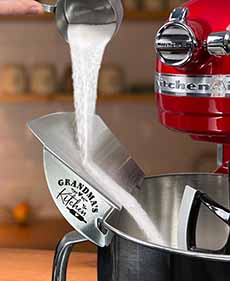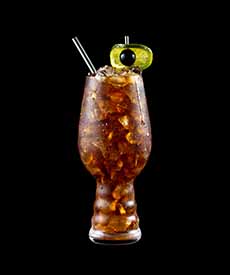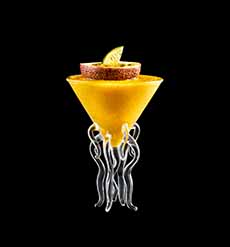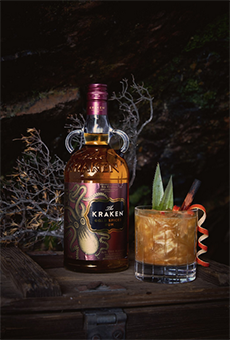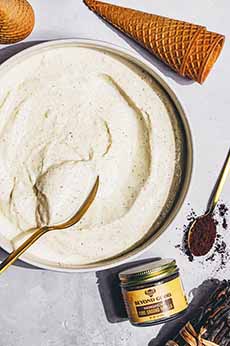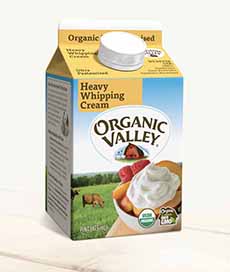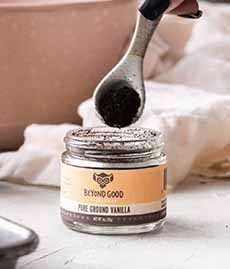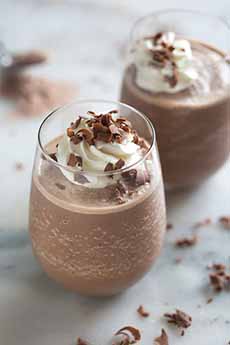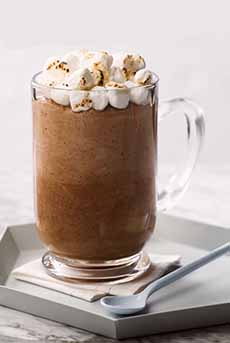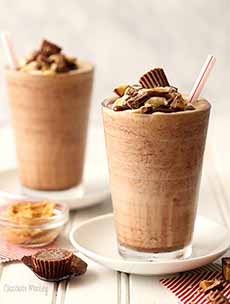|
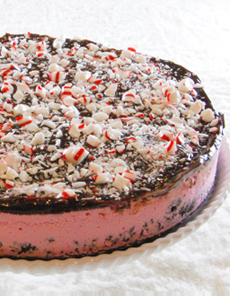
[1] You don’t need to wait for the holidays to enjoy a peppermint ice cream pie. Just smash striped peppermint candies for the topping. Here’s the recipe (photo © Hostess With The Mostest).
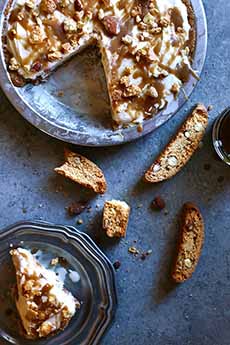
[2] This almond caramel ice cream pie has a biscotti crust. The recipe is at the right (photo © DeLallo).
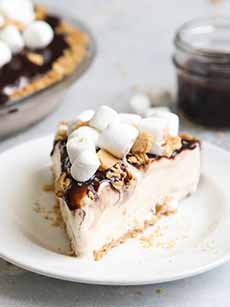
[3] This s’mores ice cream pie is topped with s’mores ingredients: chocolate, graham crackers, and marshmallows. Here’s the recipe (photos #3 and #4 © Go Bold With Butter).
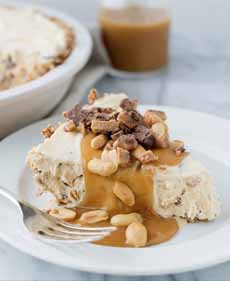
[4] How about a Sweet & Salty Ice Cream Pie? Here’s the recipe.
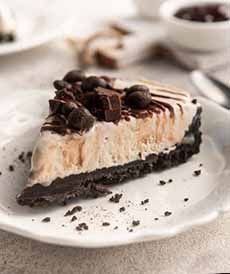
[5] Mud pie: chocolate crust, coffee ice cream, fudge topping. Here’s the recipe (photo © Foods Guy).
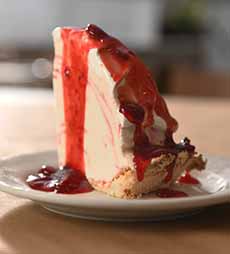
[6] The famed strawberry ice cream pie circa 1960 at The Savannah Room in Athens, Georgia (photo © Cassie Wright Photography | The Savannah Room | Georgia Center).

[7] Macadamia nut ice cream and fudge make Kimo’s Original Hula Pie, which debuted in 1977 in Maui, a fan favorite (photo © Duke’s Beach House | Facebook).
|
|
August 18th is National Ice Cream Pie Day. There are recipes as easy as buying a quart of ice cream and a ready-made pie crust, and from-scratch recipes that let you create the ice cream pie of your dreams.
National Ice Cream Pie Day is August 18th. National Ice Cream Day is the third Sunday in July. National pie day is January 23rd.
While the history of ice cream pie seems to be lost to history, we do have:
> The history of ice cream.
> The history of pie.
> The history of pie à la mode.
> The history of ice cream pie is below.
RECIPE: ALMOND CARAMEL ICE CREAM PIE
This recipe uses biscotti crumbs for the crust—a delightful surprise at first bite. Thanks to DeLallo for the recipe.
Ingredients
1 (7-ounce) package almond biscotti
3 tablespoons granulated sugar
1/4 teaspoon ground cinnamon
1/8 teaspoon salt
6 tablespoons unsalted butter, melted
3 cups vanilla ice cream
For The Topping
1/2 cup light brown sugar
1/4 cup unsalted butter, cubed
1/4 cup heavy cream
1/2 teaspoon vanilla extract
1/8 teaspoon cinnamon
1/8 teaspoon salt
2 biscotti cookies, crushed
Preparation
1. PREHEAT the oven to 350˚F.
2. MAKE the crust. Process the biscotti in a food processor until finely crumbed. Whisk together the biscotti crumbs, sugar, cinnamon, and salt.
3. ADD the butter. Blend with a fork until the mixture comes together.
4. PRESS the mixture evenly into an 8-inch pie dish. Bake for 15 minutes, until golden and set. Transfer to a wire rack to cool completely, then freeze the crust for 1 hour.
5. SOFTEN the vanilla ice cream at room temperature for 5 minutes. Spoon the ice cream into the frozen crust. Spread with a spatula for an even surface. Cover with parchment paper and freeze for 5 hours.
6. MAKE the topping. Combine the brown sugar, butter, and heavy cream in a heavy-bottomed saucepan. Bring to a boil over medium heat, stirring constantly until the butter has melted completely.
7. REDUCE the heat to low and simmer for 5 minutes, stirring occasionally. Remove from the heat and stir in the vanilla, cinnamon, and salt until smooth. Pour the sauce into a glass bowl to cool to room temperature.
8. TO SERVE: Drizzle the ice cream pie with caramel sauce and top with the extra crushed biscotti. Let stand at room temperature for 5 minutes before cutting with a sharp knife.
MORE ICE CREAM PIE RECIPES
Deconstructed Ice Cream Pie
Easy Ice Cream Or Frozen Yogurt Pie
Fantasy Ice Cream Pie
Pumpkin Ice Cream Pie & Peppermint Ice Cream Pie
Pumpkin Ice Cream Or Frozen Yogurt Pie
S’mores Ice Cream Pie
Sweet & Salty Ice Cream Pie
THE HISTORY OF ICE CREAM PIE
While there is source material on the creation of ice cream pies, cones, sundaes, etc., there’s very little to be found about the history of the ice cream pie. Even Food Timeline, an exhaustive archive of food history, is mute on the subject.
Here’s what we do know:
1800s: Molded Ice Cream. Ice cream served at fancy parties was often molded into festive shapes. By the Victorian era (1837-1901), ice cream bombes were popular, many of which included layers of biscuits (cookies) and cakes. At this point, ice cream was laboriously churned by hand, by the cooks of the elite.
1870s: Ice Cream Cake. Ice cream cake recipes begin to be published [source]. But no ice cream pie recipes!
1880s-1890s: Pie À La Mode. While ice cream and pie could have been served together since [speculatively] the Renaissance, the first “named” presentation of ice cream and pie, Pie à la Mode, has two claimants from the late 19th century. The first is John Gieriet, proprietor of the Hotel la Perl in Duluth, Minnesota, around 1885. The second is Charles Watson Townsend, a patron of the Cambridge Hotel in Cambridge, Washington County, New York, in the 1890s. Here’s more on the claims.
1940: Home Freezers. While commercial freezers were available in the second half of the 19th century, the modern home refrigerator-freezer, with a compartment larger than necessary just for two small ice cube trays, was introduced in 1940. Frozen foods, previously a luxury item, became a convenience for middle-income Americans. So we can infer that recipes for ice cream pie made it possible for home cooks to make them and keep them in the freezer* [source].
1960s: Frozen Pies. The Edwards Baking Company was founded in 1950 as a small retail bakeshop in Atlanta, Georgia. During the 1960s, the company introduced frozen pre-baked pies that were sold to retail stores. These were not ice cream pies, but conventional fruit and custard pies that were then “freshly baked” in home ovens. The company is now owned by Schwan’s [source].
1950s: Frozen Pie Crusts. The earliest reference we find for frozen pie crust, as a stand-alone consumer retail product, appears in the mid-1950s [source].
1950s to 1960s: Ice Cream Pies. Sometime in this decade, we infer, that ice cream pies became a “thing.”
1957: Mud Pie. This ice cream pie with frozen fudge sauce and a chocolate crumb crust was created by Joanna Chiyo Nakamura Droeger, a San Francisco restaurateur (photo #5). The recipe featured an Oreo cookie crust, coffee ice cream, and fudge topping [source]. Note: This is different from Mississipi Mud Pie, which is not an ice cream pie.
Early 1960s: We do know that a very popular strawberry ice cream pie was being made at the Savannah Room Restaurant in Athens, Georgia (photo #6). People drove from North Carolina to Georgia, and from Atlanta to Athens, just for the strawberry ice cream pie. It’s still on the menu. The original recipe, with a coconut almond crust, strawberry swirl ice cream, a meringue topping, and strawberry sauce, is in the source link [source].
1977: Hula Pie. Ice cream pie had proved a drawing card, such that Kimo’s restaurant on Maui opened in 1977 with its to-become-famous Kimo’s Original Hula Pie (photo #7). Macadamia nut ice cream with a layer of chocolate fudge sits atop a chocolate cookie crust. Whipped cream is piped around the base and hot chocolate fudge is poured over the top, with a sprinkle of toasted macadamia nuts.
|







